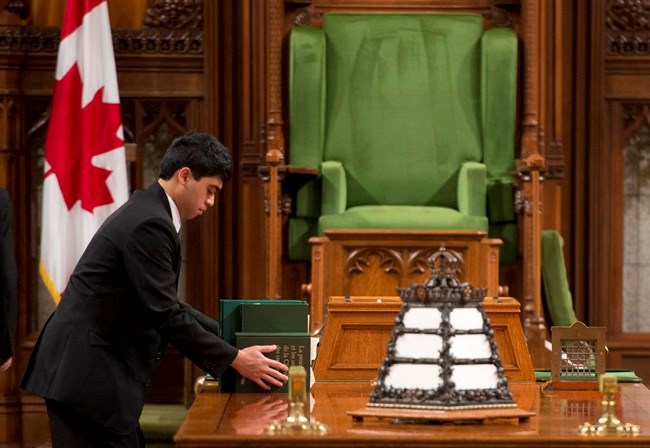OTTAWA — Conservative Leader Stephen Harper and Liberal counterpart Justin Trudeau both say the party that emerges from the Oct. 19 election with the most seats in Parliament should have a chance to form a government.
Here are five questions — and answers — arising from the debate:
Doesn’t the party with the most seats after an election form the government?
If a party wins a majority — more than all of its opponents combined — of the 338 seats up for grabs, it is accepted as the government.
Without a majority, the conventions say that the prime minister in the last government remains prime minister, even if his or her party doesn’t hold the largest number of seats.
And the prime minister has the right to meet the newly elected House of Commons to seek its support. The prime minister remains in office until he or she resigns or is dismissed.
In 1993, Kim Campbell’s Conservatives were reduced to two seats and she lost her own riding, yet she remained prime minister until she resigned more than a week after the election.
Could someone form a government and remain prime minister even if they won fewer seats than another party?
Yes. In the 1925 election, Prime Minister Mackenzie King’s Liberals won 102 seats, compared with 114 for Arthur Meighen’s Conservatives, although neither party held a majority.
Despite losing in seats, in the popular vote and in his own riding, King exercised his right to meet the new House of Commons and kept his government afloat with the support of smaller parties.
How common are minority governments?
In the 41 Parliaments since Confederation there have been 11 minority governments, although one of them moved back and forth from minority to majority as MPs changed parties and byelections were held. The last minority was that under Harper himself, from 2008 to 2011.
How long do minority governments last?
The average life of a minority government is one year, seven months and 27 days, compared with four years and four days for majorities.
What about a coalition government?
Forming a coalition government involves bringing members of other parties into the cabinet.
There was only one federal coalition government. It came during the terrible strains of the First World War in October 1917.
Prime Minister Sir Robert Borden formed a union government with Liberals who broke away from Sir Wilfrid Laurier over the issue of conscription.
In an election that December, Borden and his Unionist party won an overwhelming majority, but the union fell apart after the war.
There haven been other cases where third parties offered informal support to a minority government, but no real coalitions.



